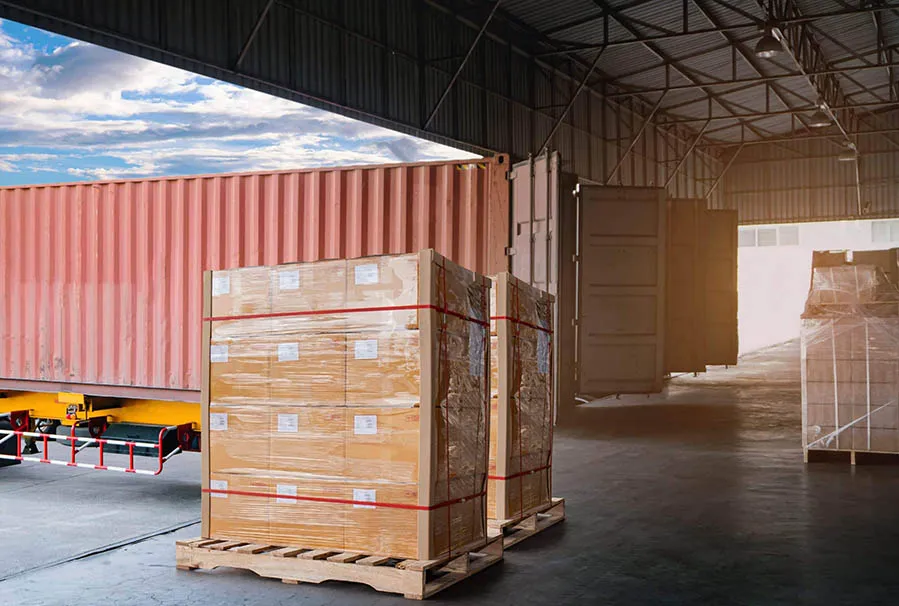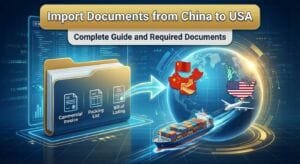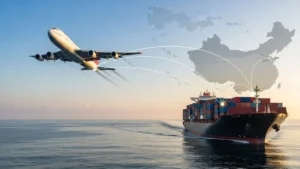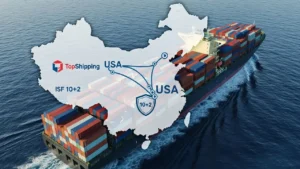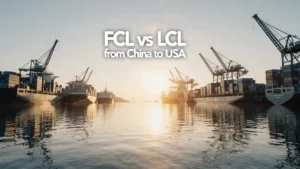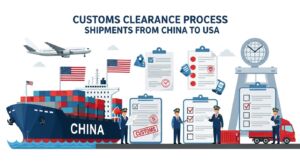When shipping goods, there always comes a time when shippers need to think about LCL shipping, which is an abbreviation for “Less than Container Load.” As the name goes, this kind of shipping applies when an ocean freight cargo is insufficient in number to fill up a full 20ft or 40ft shipping container. In this guide, we are going to cover all the important information one should know about LCL shipping, including what cost it involves, the duration it requires, and how it contrasts with other freight shipping methods.
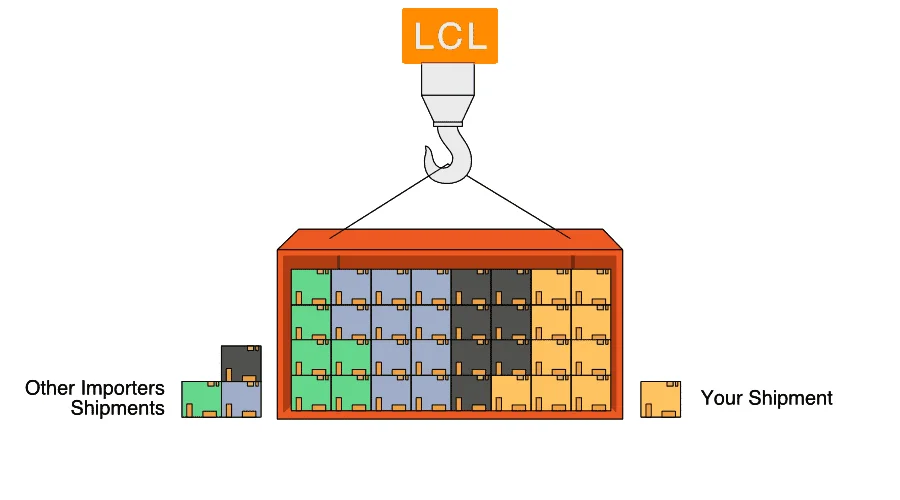
What’s LCL Shipping?
LCL shipping means Less than Container Load and is a shipment method applied when the cargo is less than the full load. It serves best for a business that needs to ship fewer goods without having to pay for the use of an entire container. In LCL, you share the container space with other shipments, which is surely a cost-effective method. Although LCL may take a little longer, due to extra handling, it does have the benefits of flexibility and cost-savings for those smaller-sized loads. In sum, shipping via LCL is just an effective way of getting your products delivered without wasting both space and money.
Differences and Benefits of Less than Container Load
Less than Container Load is a pretty practical way of international shipping for businesses and individuals with smaller volumes of cargo. In LCL shipping, one could share the space of a container with other shipments, which is quite cost-effective since you would be paying only for that portion of a container your goods are occupying rather than the entire thing.
LCL vs FCL
Unlike FCL shipping, where your goods have to occupy a full container themselves, LCL does not require the filling of an entire container. This makes LCL very good for smaller to medium-sized enterprises, since they need not wait for enough products to fill up a container. The cost in LCL is determined by the actual volume occupied by your goods during shipment.
Advantages of LCL
It saves a good amount because it was meant for low-volume cargo transportation. Besides, firms such as Topshipping offer optimized LCL services whereby more emphasis is put on ensuring safety, speed, and affordability. Secondly, they simplify the process in such a way that shipping can be efficiently done on time; thus, businesses could reach any market in the world with minimum expenditure. LCL makes it quite easy and reasonable for companies to penetrate global markets while still ensuring secured and professional handling of their merchandise.
LCL Shipping Process: From Packaging to Delivery
LCL shipping involves a number of steps, starting from the packaging of goods by a consignor, culminating in final delivery at the point of destination. The process and key considerations that will help in the smooth and cost-effective shipment of goods are briefly explained below:
Packaging and Preparation
Packaging in LCL shipping plays an important role. Unlike in FCL shipment, where goods are placed in one container, in the case of LCL shipment, space is shared in the container with other cargo. It, therefore, becomes important to securely pack your goods to ensure that they do not get damaged in transit and that your cargo fits efficiently in the container. Correct labeling of one’s goods is also very significant, as it will facilitate smooth customs clearance and allow for easy tracking.
Booking and Documentation
Once your goods are packed, the next thing you will have to do is book your LCL shipment with a freight forwarder such as Topshipping, with necessary documentation needed for the commercial invoice, packing list, and other customs paperwork the freight forwarder would require. The freight forwarder will consolidate your goods with other shipments that are headed to the same destination.
Ocean Transport
This includes filling the container and sending it, via ocean freight, to the destination port. While your goods are being moved along with other shipments during this period, at the same time, the freight forwarder tracks cargo movement.
Customs Clearance and Delivery
Your cargo, upon arriving at the port of destination, passes through customs clearing. This would normally involve checking the paperwork and any duty or tax that may be levied. Once cleared, your goods become deliverable. The freight forwarder does coordination in transporting the goods from the port to the final destination to ensure everything reaches on time in good condition.
LCL shipment is effective and rather economical for those organizations that have smaller volumes of cargo to be shipped. TopShipping smoothes the process in a timely and secure way, leading the business through complications involved in international shipping without taking a full container.
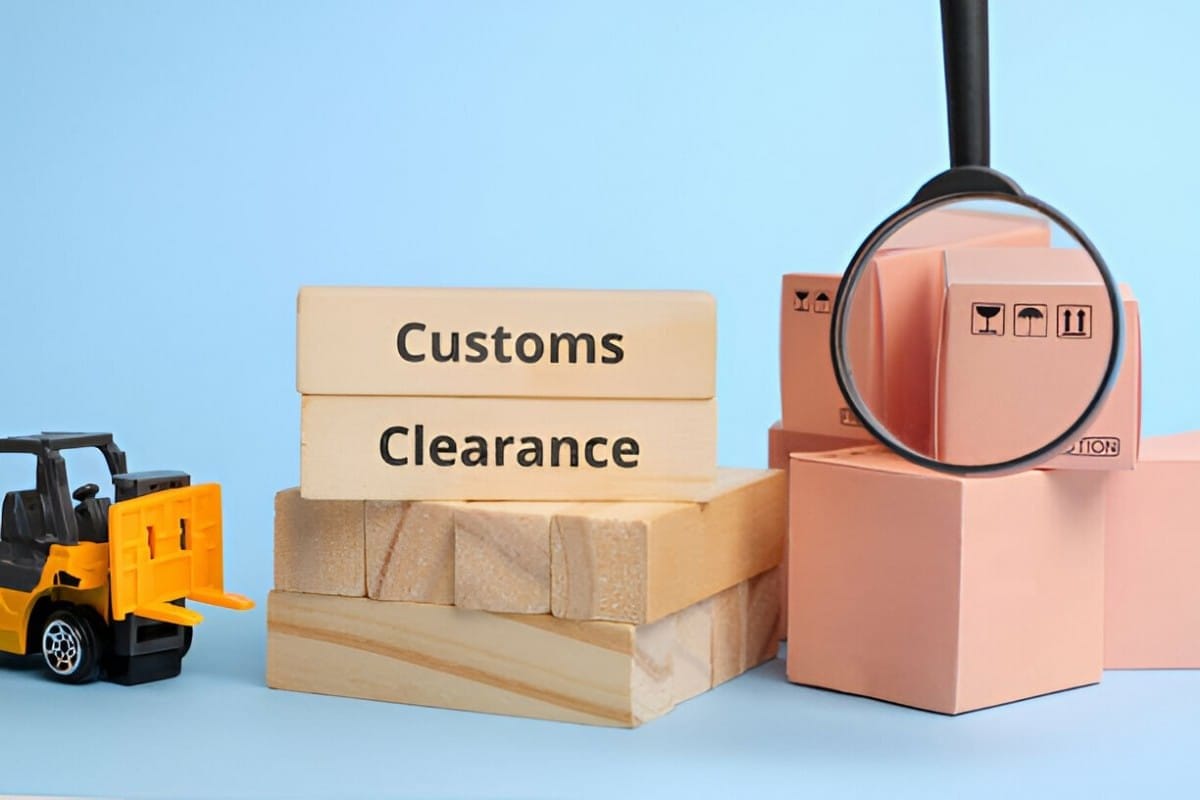
Advantages and Disadvantages of LCL vs. FCL Shipping
For companies that have to choose between LCL and FCL shipping, a decision has to be made based on the merits and demerits of each method to choose which one will work best. Some key pros and cons are given below.
Advantages of LCL Shipping
Economical for Small Shipments: LCL is good for those businesses that don’t have enough merchandise to fill a full container. You pay only for the portion occupied by your cargo in a container and not for the full container; thus, making it more economical when you have smaller shipments.
Flexibility
LCL offers flexibility in that the companies need not wait until they have sufficient products for a full container. Regarding this, smaller lots can be delivered faster.
Lowered Storage Costs
Since lots of LCL shipments get consolidated with other cargoes, facilities for storage are least required. This is a big advantage for those companies with limited storage capacity or those who wish to reduce overhead costs.
Access to Global Shipping
The benefit of LCL is that it can provide small businesses with entry into the international market without having to be bound by higher upfront costs than FCL shipments. One can be certain that LCL shipments will be efficiently consolidated and delivered by companies such as Topshipping.
Disadvantages of LCL Shipping
Longer Time of Transit: The time taken is longer in LCL cargo compared to FCL, as it needs to consolidate with other cargoes and may face more frequent handling. It may further lead to delays when loading and unloading occur.
Risk of Damage
An increased danger of goods getting damaged because of shifting during a trip in cases of multiple shipments in one container. Proper packing is very much essential for lesser chances of damage.
Higher Handling Costs
Although LCL is cheaper in very small shipments, the added handling and consolidation process often means that costs per cubic meter are higher using LCL than FCL.
Advantages of FCL Shipping
Faster Transit Time
As long as the cargo is not shared with any other shipment, there are fewer stops and handling points involved. This usually leads to quicker shipping with less delay compared to the case of LCL.
More Cargo Control
In FCL shipping, the shipper has complete control over cargo during the entire process. Since your goods are solely inside the container, there is no risk involved that any other shipment may cause damage or delays.
Lower Damages Risk
The FCL shipments are usually packed and handled more cautiously since they are the only cargo in the container.
Cost-effective for larger shipments
when you have enough goods to fill an entire container, FCL can be cost-effective in terms of the shipping rate per cubic meter since you will not incur additional fees that come with LCL consolidation.
Disadvantages of FCL Shipping
More Expensive for Small Shipments: If cargo doesn’t fill an entire container, then you’re paying for space that isn’t used. In such instances, it is far more expensive for a business dealing with small shipments to choose FCL.
Storage Costs
A completely utilized container by larger shipments can entitle a business to higher storage costs, especially in instances where the goods aren’t ready for shipment.
More Inventory
Not every business has a continuous flow of goods, so a full container load would mean more inventory or larger storage space.
LCL Shipping Costs
LCL is the cost of shipment when the cargo owner is sending shipments that are less than a container load. Prices may fluctuate based on weight and/or volume of cargo, shipping route, or additional services such as handling and insurance. Because LCL shipments share container space with other merchandise, the typical costs are much lower compared with renting a full container. However, one has to consider the fact that there might be extra handling of cargo in LCL shipping, taking more time, again affecting the overall cost.

Comparing LCL Shipping with Other Modes
LCL Shipping vs Air Cargo : Shipping Rates
The choice between LCL and air cargo will depend on your payload’s urgency and your budget. Air freight is faster but more expensive, while LCL offers cost savings at the expense of longer delivery times. The rates for one or the other are priced based on weight and volume.
What IS FCL Shippping?
FCL shipping means a shipment method in which the shipper has sufficient goods to fill an entire shipping container. Here, the shipper rents an entire container for his cargo only, and it usually works out more efficiently and secure. This is often faster compared to any other method, since going directly from the sender to the receiver, the container will not need to share space with other shipments. This option is ideal for those businesses that have more significant amounts of shipments, as using this option saves time and decreases the risk of merchandise damages.
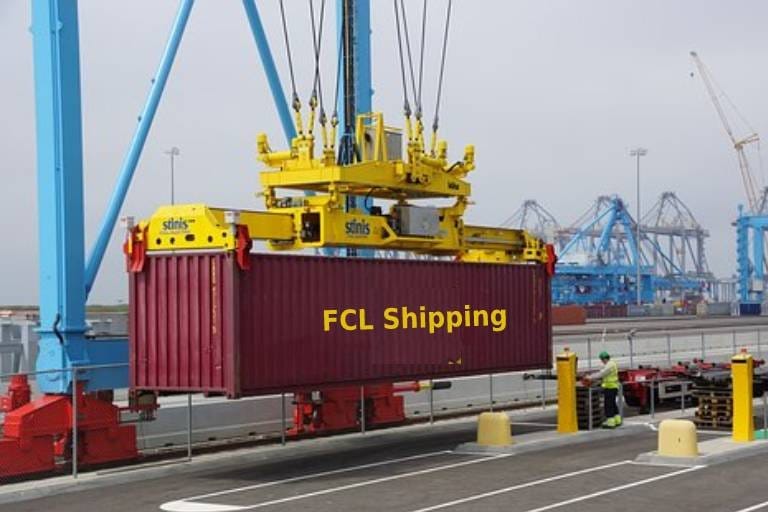
LCL Shipping or FCL Shipping?
While LCL works for small loads, there does come a point where it could be most economical to conclude for a full vessel cargo- FCL indeed, even if you do not have sufficient weight to fill it entirely. This is because LCL costs further per boxy cadence than FCL. Once a payload reaches a certain volume, choosing FCL can give faster conveyance times and lower the threat of damage.
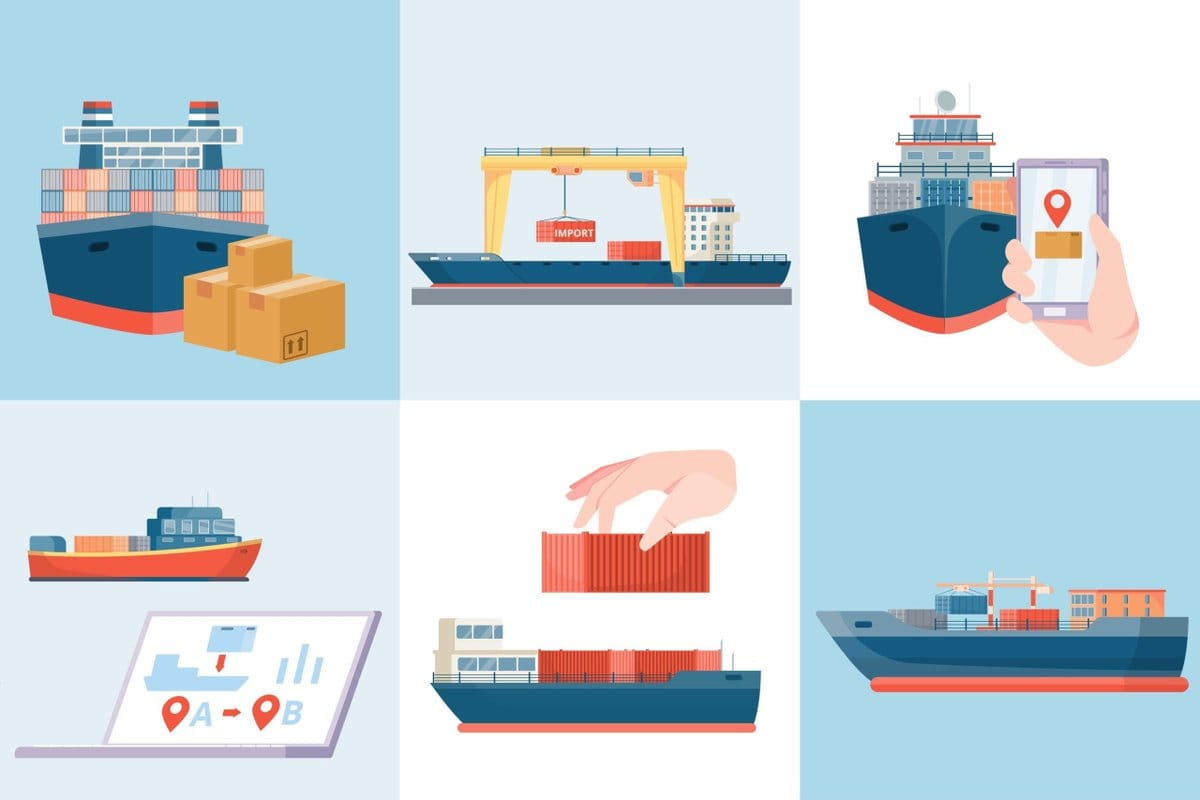
Differences between FCL Shipping
and LCL
Sgipping
In vessel shipping, there are major two options: Full Container cargo known as FCL and lower than Container cargo known as LCL. Both of these options vary in several ways:
Container Shipping Space
The major difference between FCL and LCL is vessel sharing. In LCL, different shippers share a single vessel; in FCL, the entire vessel is reserved for one shipper only.
Volume of Goods
Shippers conclude for LCL when their goods don’t enthrall enough space to fill a vessel entirely. LCL is suitable for lower volume shipments. On the other hand, FCL is designed for larger goods that can fill a vessel which can be 20ft, 40ft, 40HC,etc.
Shipping Costs
With LCL, its shippers pay only for the space their goods occupy within the vessel engaged. In FCL, again, shippers have to bear all the expenses of the whole vessel. For lighter goods, LCL tends to be the more provident choice, while when heavier shipments come into play, FCL becomes cost-effective. When FCL is applied to larger volume goods, this gives a lesser price per boxy cadence compared to LCL.
Speed of Delivery
Generally, FCL shipping gives better delivery times compared to LCL shipping. For any shipment that is time sensitive, FCL is preferred because it ascertains the timing of delivery of goods early. Relatively, LCL has longer conveyance time due to similar factors such as connection and deconsolidation of goods, waiting for other shippers’ weight to arrive at the harborage for lading, and how the overall procedure involved in LCL shipping is somewhat complex.
Inflexibility
LCL shipping is less rigid than FCL. In LCL, the options for delivery are more, and shippers can combine shipments that are headed for various anchorages. Additionally, with LCL, it is easier to transfer products to Amazon FBA storage.
Safety of Goods
The safety of deliveries are told by the frequency and number of handlers involved. LCL shipments involve more handling than FCL does, adding to the risk of damage, theft, or loss. FCL minimizes handling since there is no sharing of vessel space, therefore considered ideal for sending fragile cargo.
Fresh LCL Freights
By freshness, LCL freights mean that the cargo involves the movement of consumable products by the Less than a Container Load way. This means your shipment will not fill a container but shares a container with other people’s shipments. This may be food, fruits, vegetables, dairy products, or meat that requires quicker delivery to keep them fresh. LCL is an economic way of shipping this commodity, whereby at the same time, extra care is taken during shipment to ensure that freshness and safety for consumption are preserved.
Needed Paperwork for LCL Shipping
There is some paperwork necessary in shipping goods using LCL to make the process successful. You first have, of course, a commercial invoice that contains, among other things, a description of the goods being transported, their values, and details about who the buyer and seller are. The packing list outlines how the goods are packed and their weights. You will be required to have a bill of lading, some sort of contract between the shipper and the carrier. There is also customs documentation for international shipments that may be inclusive of permits or certificates necessary for particular goods. It will be good to have all these papers ready in advance to prevent delays in shipment and compliance with shipping regulations. Generally speaking, good documentation ensures the smooth facilitation of LCL shipment.
Transit Time LCL Shipping
Generally speaking, most LCL shipments take about 6 to 10 weeks by ocean, depending on origin and destination. In fact, the exact conveyance time is based on several factors including but not limited to distance between origin and destination, shipping route, customs concurrence procedures, and implicit detainments or dislocations along the way.
Tips for Successful LCL Shipping
Plan ahead of time to allow for connection and deconsolidation processes, including customs concurrence.
Good packaging: Allow your goods to be well-packed and palletized in order to reduce the risk of damage during the operation.Accurate attestation: Ensure that all shipping documents required are correct and complete to avoid detention or customs issues.Communication with forwarders: Work closely with your forwarder in order to organize the cargo and resolve any issues or businesses you may have.Insurance content: You can also consider taking cargo insurance that covers your goods in the event of loss or damage while in transit.Tracking shipment: Stay ahead of your LCL cargo progress by tracking it through the carrier online tracking system.In conclusion, LCL shipping offers an affordable outcome for those shippers whose weight loads are low and cannot bear the full vessel. Consolidation in shipment allows shippers to make a profit through cost savings and still penetrate global networks of shipping. Still, longer times of delivery and increased pitfalls in handling have to be put into consideration as the implicit downsides.
Educated Freight Forwarders, like Topshipping, would help in streamlining the process of LCL shipment to make sure goods are handled well and transported well. Setting a path to the best practices, which ensures the cargo is well-packaged and kept informed with processes right from shipping in China to delivery.
Final Takeaway
After booking, the freight forwarder will consolidate your goods with other shipments from various different customers into one shared container. This will ensure that a container is efficiently filled out and at least cost. Topshipping will make sure all the shipments are in place and your goods be treated with care during this stage.
FAQ
What is LCL shipping?
It stands for “lower than a vessel cargo” and refers to ocean shipping for weight loads that aren’t large enough to fill a full 20ft or 40ft shipping vessel.
How does LCL shipping work?
It involves grouping lower freight shipments together with other weight to fill a vessel, allowing shippers with lower loads to benefit from cost savings.
What are the benefits of LCL shipping?
The benefits of LCL shipping include cost savings, reduced warehousing costs, availability during peak seasons, and lower shipping costs compared to air freight.
What are the downsides of LCL shipping?
The downsides of LCL shipping include longer conveyance times, higher cost per cubic meter compared to FCL, potential delays due to customs detainments, and increased handling risks.
How are LCL shipping costs determined?
It costs are primarily determined by volume, measured in cubic meters (CBM), and include various factors such as origin connection, main leg ocean trip, destination deconsolidation, and delivery to the destination warehouse.
How does LCL shipping compare to air cargo?
It offers cost savings but has longer conveyance times compared to air cargo, which is faster but more expensive. The choice depends on the urgency and budget of the shipment.
When should I choose LCL over FCL?
LCL is suitable for small loads, but when the volume reaches a certain point, it may be more cost-effective to opt for a full vessel cargo (FCL) to ensure faster delivery times and lower the risk of damage.
What are some tips for successful LCL shipping?
Plan ahead, properly package your goods, ensure accurate documentation, communicate with freight forwarders, consider insurance coverage, and track your shipment through the carrier’s online tracking system.
When should I choose LCL over FCL?
LCL is suitable for small loads, but when the volume reaches a certain point, it may be more cost-effective to opt for a full vessel cargo (FCL) to ensure faster delivery times and lower the risk of damage.
How long does LCL shipping take?
It generally take around 6-10 weeks for ocean transport, depending on the origin and destination, shipping route, customs procedures, and potential delays or disruptions along the way.

